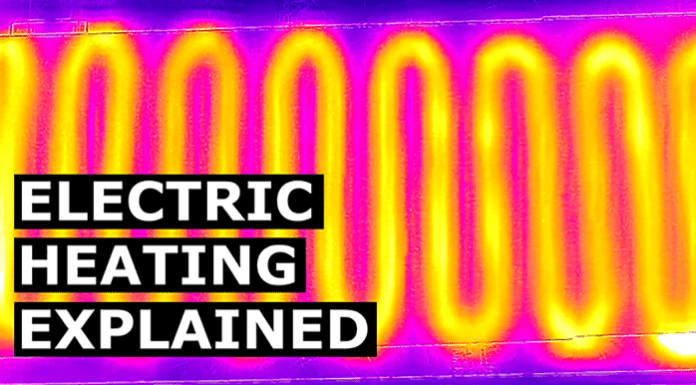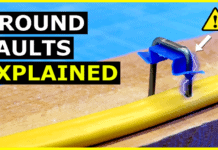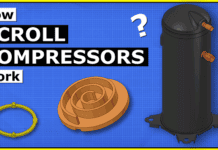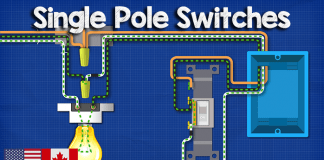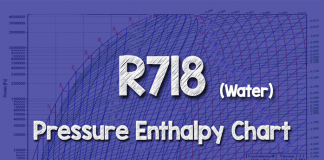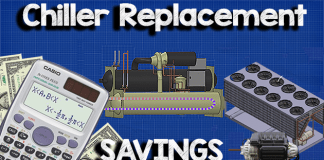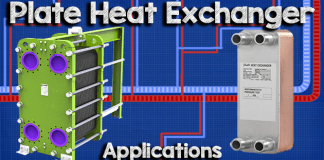Why is electric heating used? In this article, we’ll explain the benefits of electric heating and where it is used. Basic calculations, thermal imaging, electric v gas boilers, energy efficiency and much much more.
Scroll to the bottom to watch the YouTube tutorial.
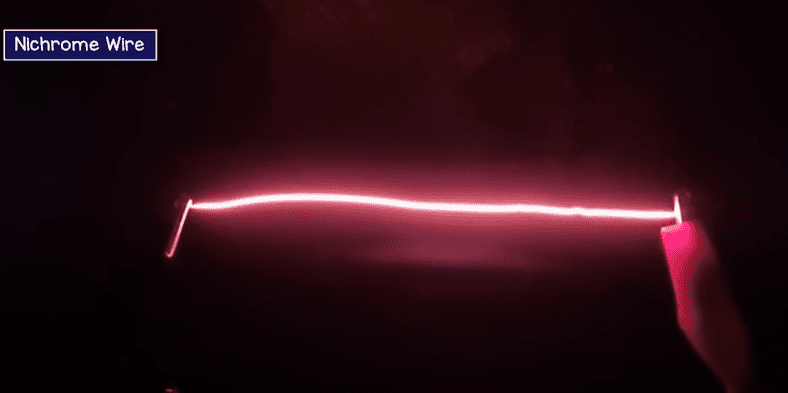
This cable generates heat, when we pass an electrical current through it and I’m going to show you how it works and why we need them in this article which is kindly sponsored by Danfoss climate solutions.
For 80 years, DEVI Electric Heating solutions have been improving people’s quality of living.
🎁 Learn more about DEVI electric heating products ➡️ https://bit.ly/3cckIvp
With electricity emerging as a source of renewable energy, its enabling electric heating as a sustainable choice for the future. See the specifications for their entire range using the link in the video description, do check that out, links down below.
How it Works
All electrical cables generate some heat. Electronic components also generate heat, that’s how the electrical energy leaves the circuit and causes our energy meter to measure energy consumption.
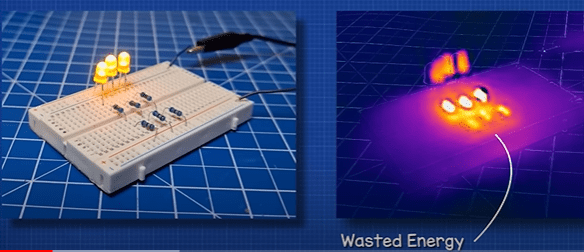
Generally, this heat is wasted energy, we don’t want this in our circuits or in our electrical distribution systems and we often need additional cooling to remove this unwanted heat from our devices, otherwise they will break. However, it’s sometimes very useful, for example in underfloor heating where the wire generates heat to warm our homes. We can easily turn it on and off and the heat is distributed throughout the room, not just along one wall like a radiator.
When we pass electrical current through a circuit, the electrons will collide with atoms in the wire and the electronic components and these collisions converts the kinetic energy into heat.
Some wires, like this standard copper one, generates small amounts of heat. But this Nichrome wire produces a lot of heat. This is an alloy, meaning a mixture of materials, specifically designed to produce very high temperatures. It gets so hot it even glows. That’s also how old incandescent lights work, the material gets so hot is glows and the lamp produces a lot of heat.
The heat generated depends on the resistance of the material used as well as the amount of current passed through the wire and also the amount of time current is allowed to pass through the wire.
Some materials have a high resistance and some have a low resistance. This is basically just a measurement of how easily an electron can pass through it without colliding. High resistance means a lot of collisions and so a lot of heat is generated.
The thickness and length of a wire affects the resistance. Short thick wires have less resistance than long thin wires. That’s why distribution cables are thick, to reduce the resistance and energy loss.

For example, this heating matt covers 1 square meter and contains around 13 meters of cable. The cable has a resistance of 246 ohms. If we connect this to a 230V supply, the current demand will be roughly 0.935 amps. The power demand is therefore 215 Watts, or 0.215 kilowatts. So, if we ran it for 5 hours, it would produce 1.07 kWh of heat and we would pay for 1.07 kilowatt hours of electricity.
Where is Electric Heating Used and Why?
Electric heating is used everywhere, from kettles, toasters, hair driers, electric showers, fan heaters, underfloor heating, frost protection and so many other applications.
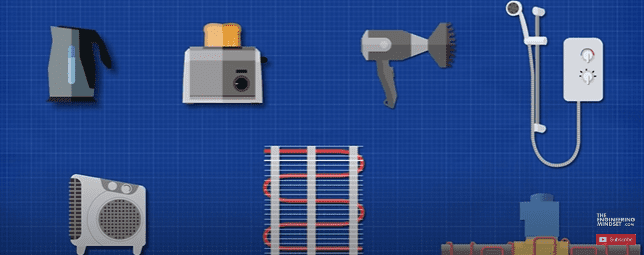
The reason electric heating is popular is that it’s very quick and easy to install compared to steam or hot water systems, there’s no risk of leaks and water damage, we can easily shape it to fit our applications, it’s almost 100% energy efficient and when powered by renewable energy sources, it has almost zero carbon emissions.
So how are they used?
Well we saw earlier, that we can use this Nichrome wire to generate heat. That’s exactly what we find inside a toaster. Just some exposed wires that surround a slice of bread and the heat of the wire is enough to toast the bread. After a short duration the power is cut and the heat stops nearly instantly. But the heat doesn’t travel too far, we really need it close to the bread for this to work.
So, instead we can couple this will a fan, and this allows us to force air over the heating element. As the air passes over the heating element it will pickup this heat and so we can project the heat into a room. The heat travels much further with this method.
Now the problem with this design is that if anything physically touches across the heating element or between the heating element and ground, we get a short circuit which will trip the breaker or even damage the device.
But we can enclose the heating element like in this kettle, where the element is submerged in water. With these devices the wire is wrapped into a coil and then surrounded by a powder, typically magnesium oxide, and then enclosed within a stainless-steel case. Now when the wire is heated, the heat transfers out through the magnesium oxide, through the tube wall and into the water which prevents the water from creating a short circuit.
With all of these methods the heating element has a small surface area, so to transfer sufficient thermal energy we need the heating element to reach very high temperatures. However, with underfloor electric heating, the surface area is very large as it covers most of the room, so the surface temperature is much lower and the heat is distributed evenly across the entire room.

Ordinarily we might find a forced air heating vent or single radiator on one of the walls, which is either electric, hot water or steam heated. This will be a high temperature as it has a relatively small surface area (~60*C). Hot air rises, so this leads to poor thermal distribution and thermal comfort in comparison to underfloor heating. We can either have total underfloor heating or we can combine this with an additional heat source for those extremely cold winter days.
If we look at a simple bathroom installation. The system is relatively simple, we just have the heating cable installed across the floor and this is connected to the wall mounted thermostat, we also have a temperature sensor connected from the thermostat and running down to the floor also. This is then all covered in an adhesive and tiled over.
The thermostat is connected to the mains power supply, when it detects the floor temperature is lower than desired, it allows electricity to flow through the wire which heats the floor up.
The cable just has two heating elements inside, these might be solid core wires or multiple strands. This will be covered in an insulation and with a thin metal protective screening and then coated with a PVC outer layer.
We also find electric heating cables used for frost protection, typically along an external pipe which has the risk of freezing. The cable is installed along the pipe and fittings and is usually then insulated. Temperature sensors and thermostats will then monitor the pipes and ensure the fluid within the pipe stays above freezing point as this will otherwise damage the pipes.
Additionally, we can use the heating cables to ensure a fluid in a pipe remains a certain temperature as it travels between various production points, for example food production or pharmaceuticals. Even if the pipes were insulated, some heat will escape and over a long distance this could cool the product too much, so electric heating ensures it’s always the correct temperature.
We might also find them used on rooftops to prevent snow building up. Because when snow falls, it can add huge amounts of weight to a buildings structure. So we can automate the process with electric heating.
Even vine yards can make use of electric heating. The wire is strung between the vines and as the temperature drops the wire provides sufficient heat to prevent frost damage to the plants.
We might also find self regulating heating cable used, especially in process engineering applications. This again has two heating elements running along its entire length, but these are encased within a conductive core. The core will expand and contract microscopic amounts as it’s temperature changes. When the cable, or part of the cable, is cooled, the material contracts and this makes it easier for an electrical current to flow from one cable to the other and this generates heat. As the temperature increases, the material expands and this makes it harder and harder for current to flow across to the other cable, so less heat is produced. This allows the cable to self-regulate its temperature and keep a fluid within a pipe at a specified temperature.

